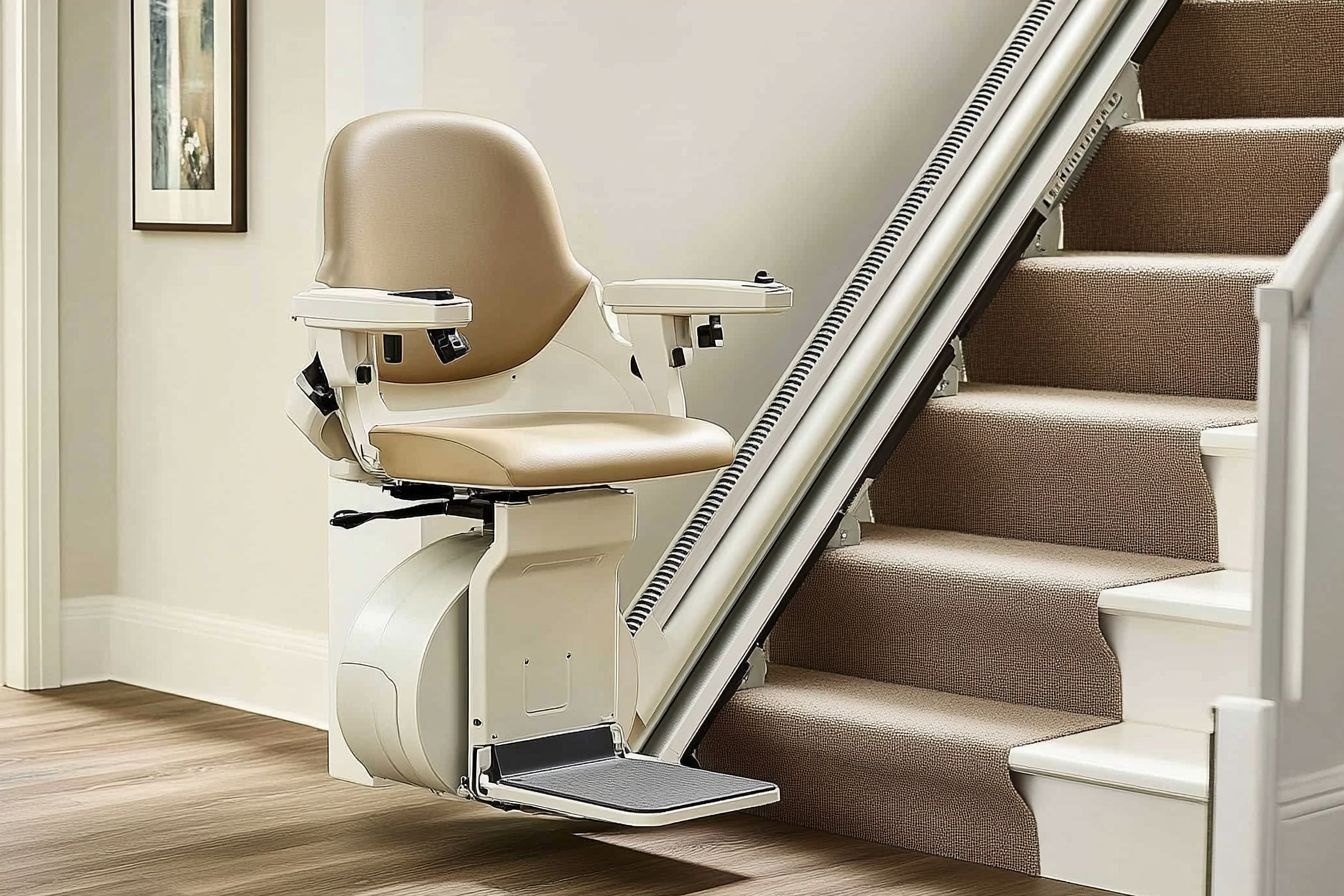Understanding Stairlifts and Options for Home Mobility
Stairlifts provide a practical mobility solution for individuals who struggle with navigating stairs in their homes. These motorised devices transport users safely up and down staircases while seated, helping maintain independence and reducing fall risks. As Australia's population ages, many families explore stairlifts alongside alternative mobility solutions to ensure safe access to all areas of the home.

What Are Stairlifts and How Do They Work
Stairlifts consist of a motorised chair or platform that travels along a rail system installed on staircases. The rail attaches directly to the stair treads rather than the wall, distributing weight evenly and maintaining structural integrity. Users operate the lift via simple controls on the armrest, with safety features including seat belts, swivel seats, and obstruction sensors that stop the unit if objects block the path.
Modern stairlifts accommodate various staircase configurations, including straight, curved, and spiral designs. Battery-powered models ensure operation during power outages, while the charging system maintains battery life through trickle charging at the top and bottom landing points. Weight capacities typically range from 120 to 160 kilograms, accommodating most users comfortably.
Alternatives to Stair Lifts for Home Mobility
Several mobility solutions serve as alternatives when stairlifts aren’t suitable or preferred. Home elevators represent a premium option, requiring more space and structural modifications but accommodating wheelchairs and multiple passengers. These residential lifts work well in multi-storey homes with sufficient space and structural capacity.
Platform lifts offer wheelchair accessibility for shorter vertical distances, typically installed for single steps or small level changes. Ramps provide another alternative, though they require considerable space to meet gradient requirements safely. Stair climbing wheelchairs enable users to navigate stairs while remaining in their mobility device, though they require caregiver assistance.
Relocating living spaces to ground level eliminates stair navigation entirely. This might involve converting ground floor areas into bedrooms or bathrooms, creating accessible living arrangements without mechanical aids. Through-floor lifts represent another option, creating openings between floors for vertical platform movement.
Getting Accurate Stair Lift Quotes
Obtaining comprehensive stair lift quotes requires professional assessment of the installation site. Reputable suppliers conduct home evaluations to measure staircases, assess structural requirements, and identify any installation challenges. These assessments typically occur free of charge and provide detailed specifications for the recommended system.
Quote requests should specify the staircase type, user requirements, and any mobility aids that need accommodation. Curved staircases require custom rail fabrication, affecting both price and installation timeframes. Outdoor installations need weather-resistant components and additional safety features.
Multiple quotes enable price comparison and feature evaluation. Request detailed breakdowns covering equipment costs, installation fees, warranty terms, and ongoing maintenance requirements. Some providers offer rental options or second-hand units, providing more affordable access to stairlift technology.
Stairlift costs in Australia vary significantly based on staircase complexity and features required. Straight stairlifts represent the most affordable option, while curved installations require custom manufacturing that increases pricing substantially. Several established providers offer different models and price points across the Australian market.
| Provider | Stairlift Type | Estimated Cost Range |
|---|---|---|
| Acorn Stairlifts | Straight Rail | $4,000 - $7,000 |
| Handicare | Curved Rail | $12,000 - $18,000 |
| Stannah | Outdoor Models | $6,000 - $10,000 |
| TK Elevator | Heavy Duty | $8,000 - $12,000 |
Installation fees typically add $500 to $1,500 depending on complexity, while annual maintenance contracts range from $200 to $400. Some providers offer financing arrangements or rental options starting around $100 per week for straight rail systems.
Prices, rates, or cost estimates mentioned in this article are based on the latest available information but may change over time. Independent research is advised before making financial decisions.
Maintenance and Safety Considerations
Regular maintenance ensures stairlift safety and longevity, with most manufacturers recommending annual professional servicing. Routine user maintenance includes keeping the rail clean, checking for obstructions, and ensuring battery connections remain secure. Professional technicians inspect mechanical components, lubricate moving parts, and test safety systems during scheduled visits.
Safety features require regular testing to ensure proper function. Seat belt mechanisms, swivel locks, and emergency stop buttons should operate smoothly without hesitation. Users should report any unusual noises, jerky movement, or operational delays immediately to qualified service technicians.
Most stairlifts include diagnostic systems that identify potential issues before they cause breakdowns. Warning lights or beeping sounds indicate specific problems, often detailed in the user manual. Keeping the rail area clear of obstacles and ensuring proper charging dock connection prevents most operational issues.
Funding Options and Government Support
Australian government programs may provide financial assistance for mobility equipment including stairlifts. The National Disability Insurance Scheme evaluates individual circumstances and may fund appropriate mobility solutions as part of participant plans. Veterans’ affairs programs offer similar support for eligible service members and their families.
State-based programs occasionally provide grants or subsidised equipment access for seniors or people with disabilities. Local councils sometimes maintain information about available funding sources and application processes. Private health insurance rarely covers stairlifts as they’re typically classified as home modifications rather than medical equipment.
Some providers offer trade-in programs for existing mobility equipment or payment plans that spread costs over extended periods. Charitable organisations occasionally provide funding assistance or refurbished equipment for families facing financial hardship.
Stairlifts represent one of several mobility solutions available for navigating multi-level homes safely. Whether choosing traditional stairlifts, exploring alternatives, or seeking funding assistance, thorough research and professional consultation ensure the most appropriate solution for individual circumstances. Proper installation, regular maintenance, and understanding available support options contribute to successful long-term mobility solutions that enhance independence and safety within the home environment.
This article is for informational purposes only and should not be considered medical advice. Please consult a qualified healthcare professional for personalized guidance and treatment.




